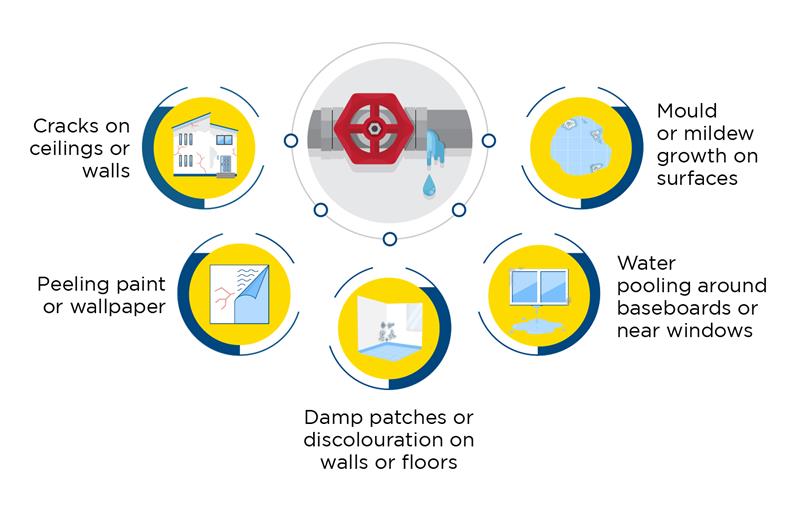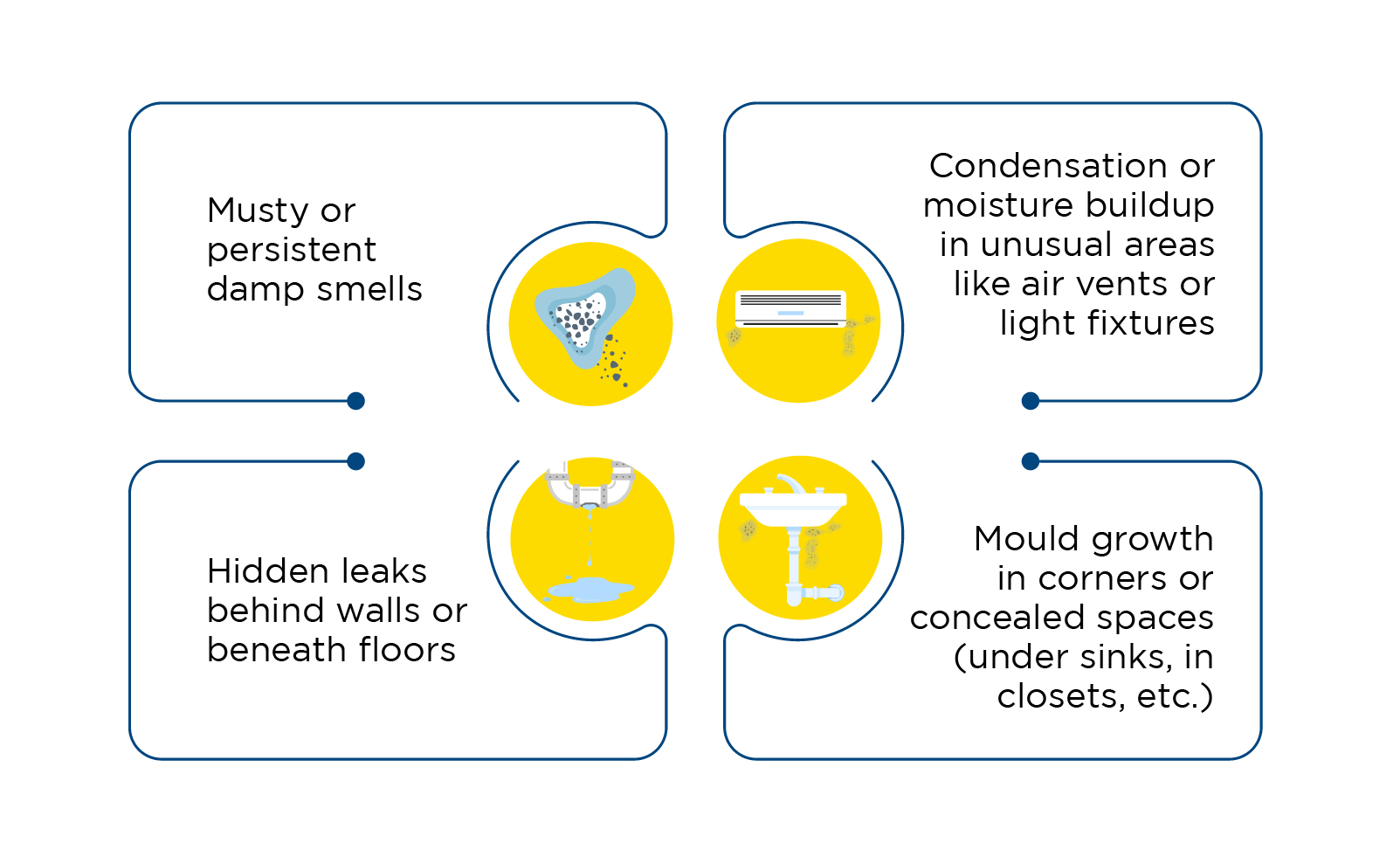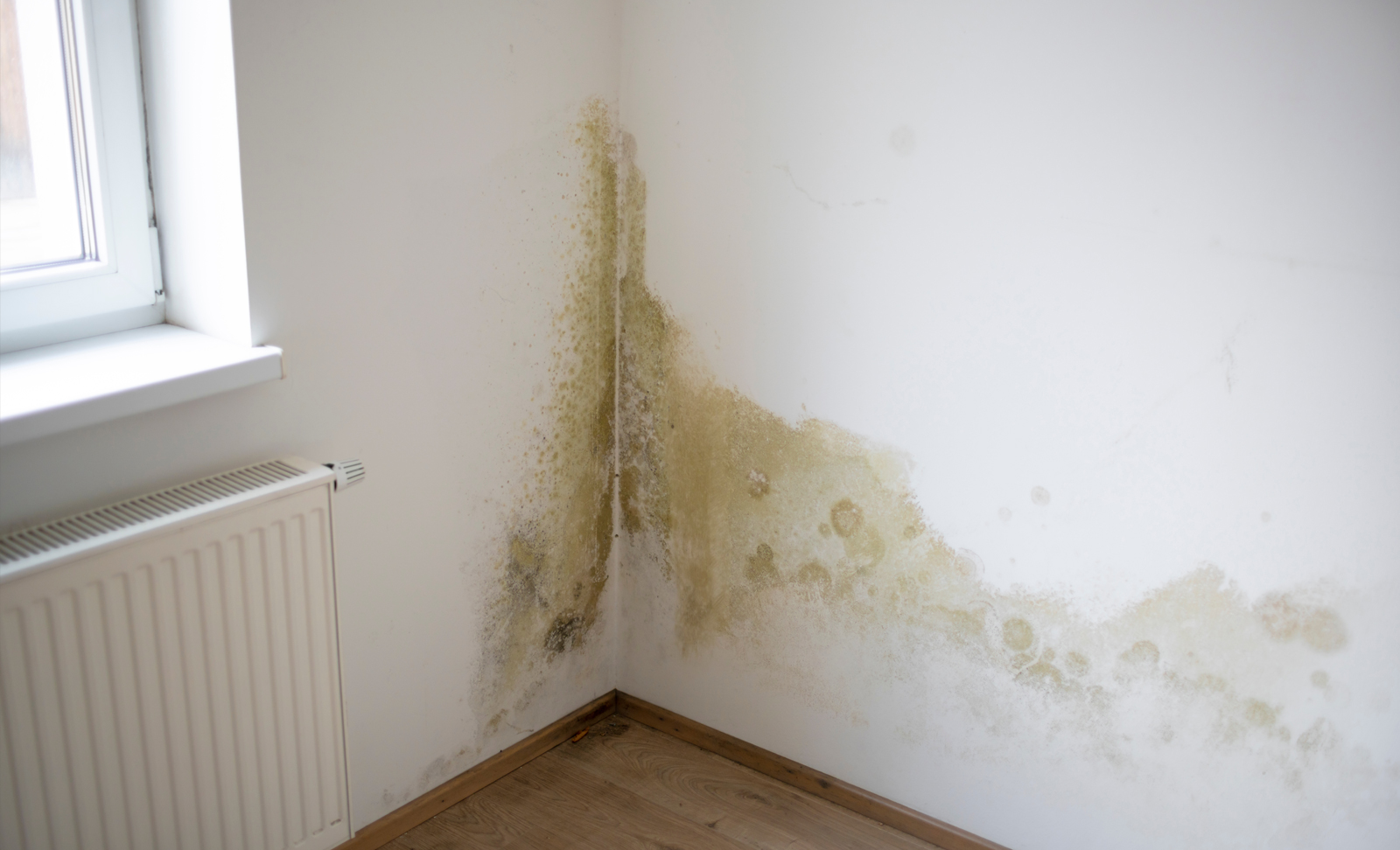
Renovation
5 Ways to identify the root cause of water leakage in flats
Water leakage can damage your flat if ignored. Learn how to identify signs like ceiling leakage or water seeping from walls. Explore effective waterproofing and solutions like crack sealers to protect your home and save on costly repairs.
Water leakage in flats is a widespread issue that can cause significant damage if not addressed promptly. Over time, water leakage can weaken your home’s structural integrity, leading to severe damage to walls, ceilings, and flooring. Identifying the root cause early is critical to prevent further complications and costly repairs. Without accurate detection, waterproofing may not fully resolve the problem, and recurring issues could persist. Addressing the issue at its source is essential to ensure lasting protection and avoid repeated damage.
In this article, we highlight the main signs of water leakage and offer practical tips to help you detect them early. Addressing these issues promptly can minimise damage, reduce repair costs, and prevent future water seepage. Additionally, we’ll explore the financial consequences of ignoring water leakage and the importance of waterproofing solutions.
Cost of water leakage
If left undetected, water leakage can result in substantial financial costs. As the leak persists, damage to your property can significantly increase repair expenses. Here's a look at the potential financial impact:
- Structural damage:
Moisture can seep into walls, ceilings, and floors, weakening the building’s structure. Repairing extensive damage, particularly to the foundation or roof, can be very costly, often requiring major work like re-pouring concrete or replacing beams.
- Mould and mildew:
Water exposure encourages mould and mildew growth, posing serious health risks. Mould remediation can cost thousands of rupees, especially if it has spread within walls or under floors, requiring professional removal services.
- Higher utility bills:
Water leaks can significantly increase utility bills. A slow leak wastes water, driving up the water bill, while leaks around heating or cooling systems may affect energy efficiency, raising overall energy costs.
- Damage to furniture and belongings:
Water can damage furniture, carpets, and appliances, leading to costly replacements. Water, mould, or mildew can ruin belongings beyond repair, adding up to significant expenses.
- Insurance implications:
Insurance policies typically cover water damage, but claims can be denied if neglect is found. Additionally, making claims for water damage may result in higher premiums, leading to long-term costs.
- Property value depreciation:
Water damage can lower your property’s resale value. Prospective buyers may avoid purchasing flats with water damage or demand large price reductions to cover the necessary repairs.
Early detection and timely repairs can help avoid costly structural damage, mould remediation, and expensive utility bills. By conducting regular inspections, addressing leaks promptly, and investing in waterproofing solutions, you can protect your flat from the financial risks associated with water damage.
Section 1: When the leakage is obvious vs. when the leakage is tricky
Water leakage can sometimes be easily noticeable, while at other times, it can be hidden and difficult to detect. Recognising the difference is crucial, as early detection can save considerable time and money on repairs. Here’s an overview of the two categories:
Obvious signs
Some signs of water leakage are visible and easy to detect. These include:
These signs are typically indicative of a plumbing issue, roof leak, or poor waterproofing. When such visible damage occurs, it suggests that water has already infiltrated your living space, requiring immediate attention.
Tricky signs
On the other hand, water leakage is not always easily visible. In some cases, the signs are more subtle, requiring closer inspection. Here are some tricky indicators to be aware of:
These signs suggest that water has seeped into areas that are not immediately visible, potentially causing long-term damage. Addressing these hidden issues is critical to avoid further water seepage and structural harm.
Section 2: 5 Ways to identify water leakage in flats
Detecting leakages early can prevent significant structural damage and reduce the need for expensive repairs. Let’s explore the 5 most common ways to identify it in your flat.
1. Cracks on ceilings - The sign of roof leaks
One of the most telling signs of water leakage in your flat is cracks on the ceiling, especially if your flat is located on the top floor of a building. Roof leaks are a common cause of ceiling cracks. The moisture from these cracks can seep into the ceiling materials, causing them to weaken and crack.
To detect the source of the problem, inspect the area above the ceiling, particularly the roof. Look for any visible signs of water intrusion, such as damp spots or visible cracks in the roofing material. In flats with false ceilings, moisture buildup behind the ceiling can cause it to sag or become damp. This issue can be effectively addressed by sealing the roof and ceiling areas.
2. Peeling paint, plaster, or wallpaper - Plumbing issues or structural damage
Another sign of water leakage is peeling paint, plaster, or wallpaper. This occurs when moisture gets trapped behind the walls or ceilings, leading to the deterioration of the finish. The moisture could be the result of a leaking pipe, faulty plumbing, or seepage from external sources like rainwater.
If you notice peeling or bubbling paint, it is essential to inspect the area carefully. Sometimes, the problem lies in the plumbing system or in the structural integrity of the wall itself. Inspecting the affected walls and addressing any plumbing issues can help prevent further damage.
3. Mould or mildew growth - The hidden danger of dampness
Mould and mildew thrive in damp, humid conditions, and they are often the result of water leakage. Even if the leak is not immediately visible, moisture can cause mould to develop in hidden areas like behind walls, under flooring, or inside air ducts. This ongoing water leakage can also pose serious health risks, especially for those with respiratory issues.
If you notice an increase in the growth of mould or mildew, it is time to investigate the source. Common causes of mould growth include leaks in bathrooms, under sinks, or near windows. Investing in waterproof paints and materials can help prevent mould growth and eliminate excess moisture in the affected areas.
4. Dripping or rusty pipes - Plumbing failures as a root cause
Leaking or rusty pipes are one of the most common causes of water leakage in flats. Over time, pipes can corrode, rust, or develop small cracks, leading to constant seepage. Repairing the pipes or replacing them entirely can help prevent this type of damage.
If you notice a steady drip from a pipe or rust around the plumbing fixtures, address the issue immediately. Especially in flats that are part of multi-story buildings, a plumbing issue in one flat can also lead to water leakage in the flats below. Ensure the plumbing system is regularly inspected and maintained to prevent this issue.
5. Musty odour - The sign of hidden water seepage
A musty smell often indicates hidden water seepage in areas that are not immediately visible. The damp smell usually comes from water trapped in walls or under floors. This persistent odour is a warning sign that there may be hidden leaks affecting your flat.
Check areas such as the kitchen and bathroom for any signs of water leakage. Pay attention to plumbing connections as well as areas near exterior walls or the foundation. If you detect a musty smell, it is essential to locate the source of the water seepage.
Also watch: Dr. Fixit Dampguard - Dampness - Application
Section 3: How to prevent water leakage in the future
Once you’ve identified the signs of water leakage, it becomes necessary to take steps to prevent future issues. Regular maintenance and waterproofing solutions can help protect your flat from water damage.
1. Routine inspections
Conduct regular inspections of your flat to check for any signs of water leakage, such as cracks, damp patches, or mould.
2. Proper sealing
Properly sealing cracks in walls, windows, doors, and around plumbing fixtures can go a long way in preventing water from entering. Use high-quality sealants to fill any gaps or cracks, ensuring a watertight seal.
3. Waterproofing solutions
Invest in professional waterproofing services to protect your home from any future leaks. This may include terrace proofing and wall waterproofing. High risk areas include bathrooms, kitchens, flowerbeds and balconies.
Section 4: How to identify builder issues for water leakage in flats
In some cases, leakage in flats is not caused by natural wear and tear or extreme weather conditions but rather by inherent defects in construction. Poor construction practices can lead to persistent water seepage. This may not be immediately noticeable in a new structure but can result in significant damage over time. Below are a few common construction flaws that lead to water leakage:
1. Poor use of waterproofing solutions
Waterproofing is critical in areas that face heavy water loads (For example, terraces, bathrooms, kitchens, and basements). If waterproofing is not done correctly, water can seep into the structure through walls, floors, or ceilings. Construction errors like improper sealing of joints, subpar workmanship, or use of low-quality materials often result in major leaks.
Example: If waterproofing is improperly applied to flat roof terraces, water may penetrate through cracks or gaps.
2. Inadequate slope in terrace construction
One major cause of water leakage is poor utilisation of slopes in terraces or flat roofs. A slight slope is essential for water to flow towards drains, preventing water pooling. When the slope is improperly planned or executed, rainwater accumulates and infiltrates the building.
Example: A roof with an inadequate slope can cause water pooling, letting it seep into the structure.
3. Faulty sealing around windows and doors
Windows and doors can prove to be significant points for water entry. Gaps or improperly installed seals can allow rainwater to penetrate walls, leading to significant water damage. Poor sealing is often the result of using low-quality materials or careless construction practices.
4. Improper drainage system design
A building’s drainage system is critical to its efficient functioning. Significant damage can occur when drainage systems are not correctly designed or become blocked. Improperly installed or poorly maintained drainage pipes can cause water to back up, leading to major leaks. Inadequate drainage around the building’s foundation and plinth may also cause external water seepage. This can impact the structural integrity of the building.
Example: Misaligned or clogged drainage pipes can force water to back up into the structure, leading to water damage.
5. Use of substandard construction materials
Substandard materials used in construction can reduce the building's resistance to water. Materials like porous concrete, rust-prone steel, or substandard sand absorb moisture, leading to cracks and deterioration.
Example: Brittle cement in wall construction can lead to water seepage into the flat.
6. Cracks in concrete or masonry work
Cracks in concrete arise from poor construction techniques like improper curing or inadequate reinforcement. They can also arise due to the incorrect mix of concrete or the use of substandard materials. These cracks soon enough become pathways for seepage, compromising the structural integrity over time.
Example: Cracks in basement walls can allow groundwater to infiltrate, causing structural damage.
Also Watch: Dr Fixit Pidifin 2k Bathroom & Other key areas
Conclusion
Identifying water leakage early is crucial to prevent further damage to your flat. Signs such as cracks in ceilings, peeling paint, mould growth, dripping pipes, and musty odours can indicate ongoing water seepage. Promptly addressing these signs can help protect your home from expensive repairs and long-term damage. Regularly inspect your property, implement waterproofing solutions, and maintain plumbing systems to prevent future leaks.
FAQs:
1. How to stop water leakage from the concrete roof?
Water leakage from a concrete roof is either due to poor waterproofing or deterioration over time. Inspect the roof for visible cracks or damaged waterproofing layers/flooring. Apply a high-quality waterproofing remedy if necessary. Consult a professional to ensure the application is done correctly.
2. How to stop water leakage from the wall?
To stop water leakage from the wall, first identify the source. If the issue is plumbing-related, check for leaking pipes or fittings behind the wall. Seal any gaps or cracks with suitable sealants. For external water seepage, go for wall waterproofing remedies. It is better to go for a professional inspection of critical issues.
3. How to check water leakage in the wall?
Look for damp patches, peeling paint, or discolouration. Tapping the wall might reveal soft or hollow spots, suggesting water damage. A moisture meter can help detect hidden moisture. Check the exterior for cracks or gaps where water might be entering.
4. How to stop water leakage from the terrace?
Water leakage from the terrace is often caused by deteriorating waterproofing or cracks in the floor. Inspect for visible cracks or damaged waterproofing layers. Use a terrace proofing solution and reapply waterproofing if necessary. Ensure proper drainage systems and slopes are in place to prevent water pooling.
5. How to stop water leakage from the bathroom?
Bathroom water leakage is often due to faulty plumbing or damaged fixtures. Poor waterproofing of the floors or walls can also be a major factor. Start by checking for leaking pipes and replacing any faulty components. For leaks on walls or floors, use appropriate materials to seal the area. Regularly check the caulking around bathtubs and showers, as these can degrade over time, allowing for leakages.
6. How to solve the water leakage problem in my flat?
Start by identifying the source of the leak. Inspect ceilings, walls, and plumbing fixtures for visible signs of water damage. Use relevant waterproofing products to seal cracks and repair plumbing. For critical issues, consult a professional to resolve the problem effectively.
7. How to prevent water leakage from bathroom tiles?
Water leakage from bathroom tiles is often caused by damaged grout or caulking. Inspect the joints for cracks and reapply grout or caulking to seal gaps. Apply waterproofing solutions before re-tiling to ensure water doesn’t seep behind the tiles. Regularly inspect plumbing behind the tiles to prevent leaks.
Get Professional Waterproofing Solutions Today
Fill The Form below to took free site evaluation by Dr. fixit point safe painting service expert


